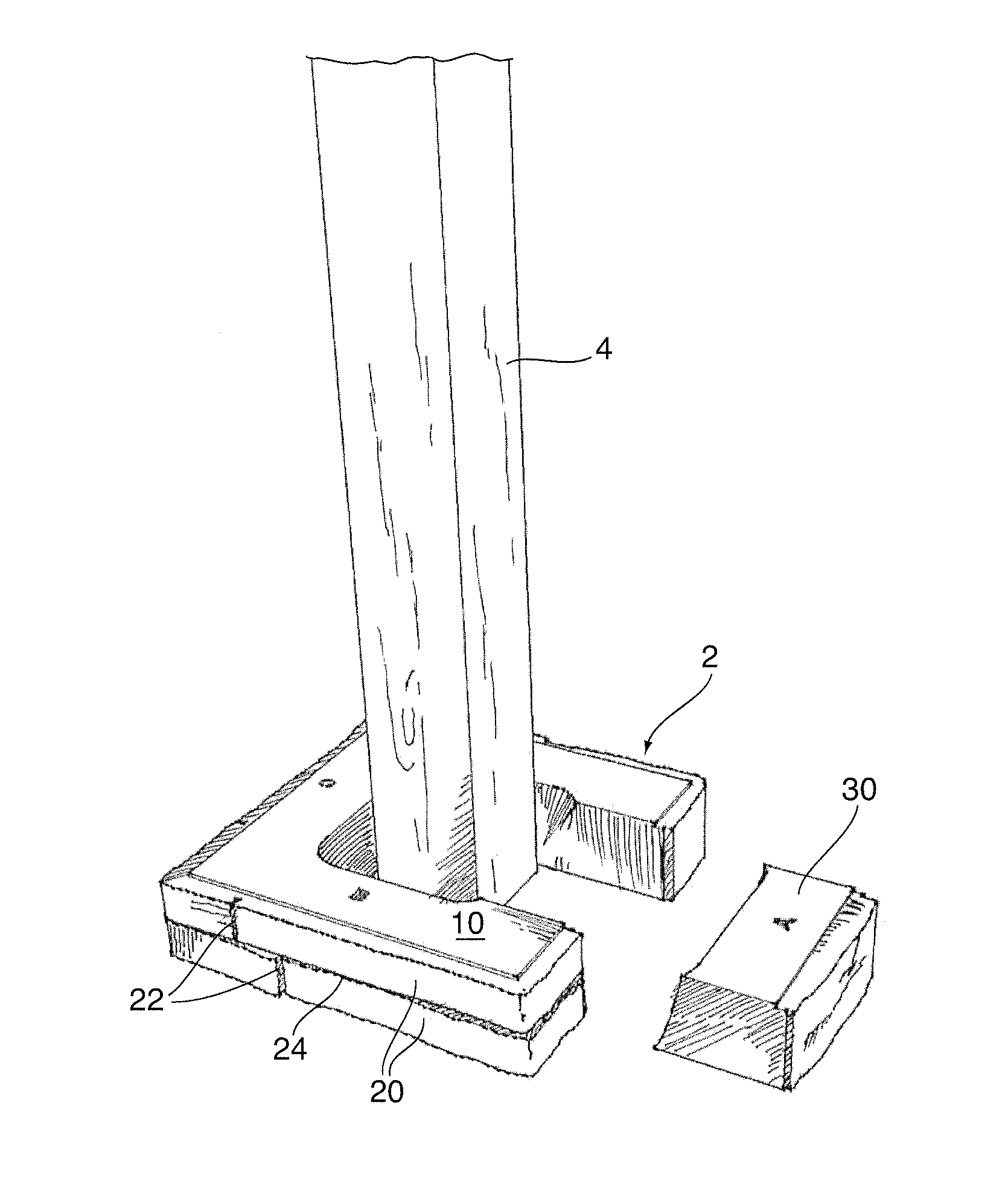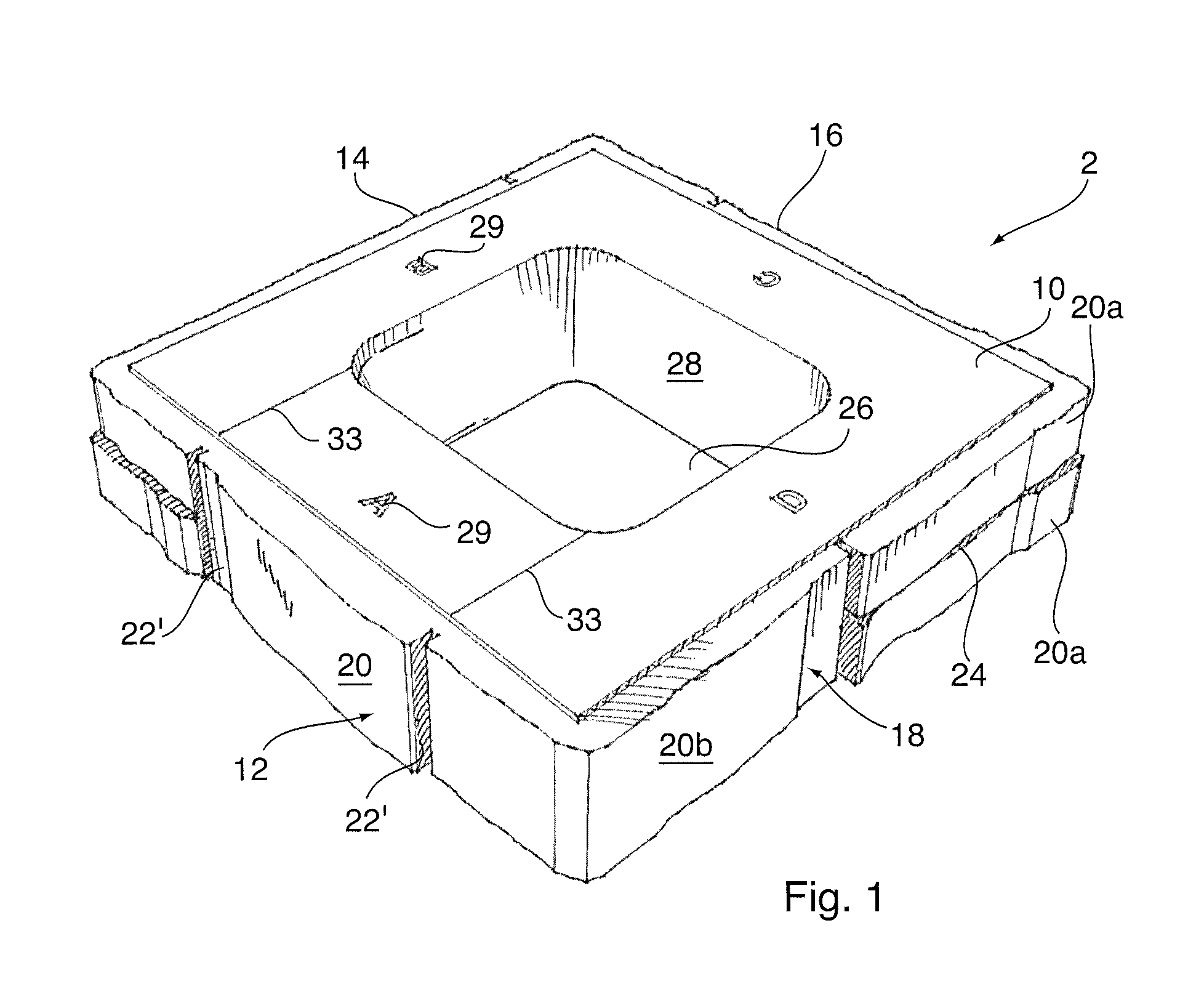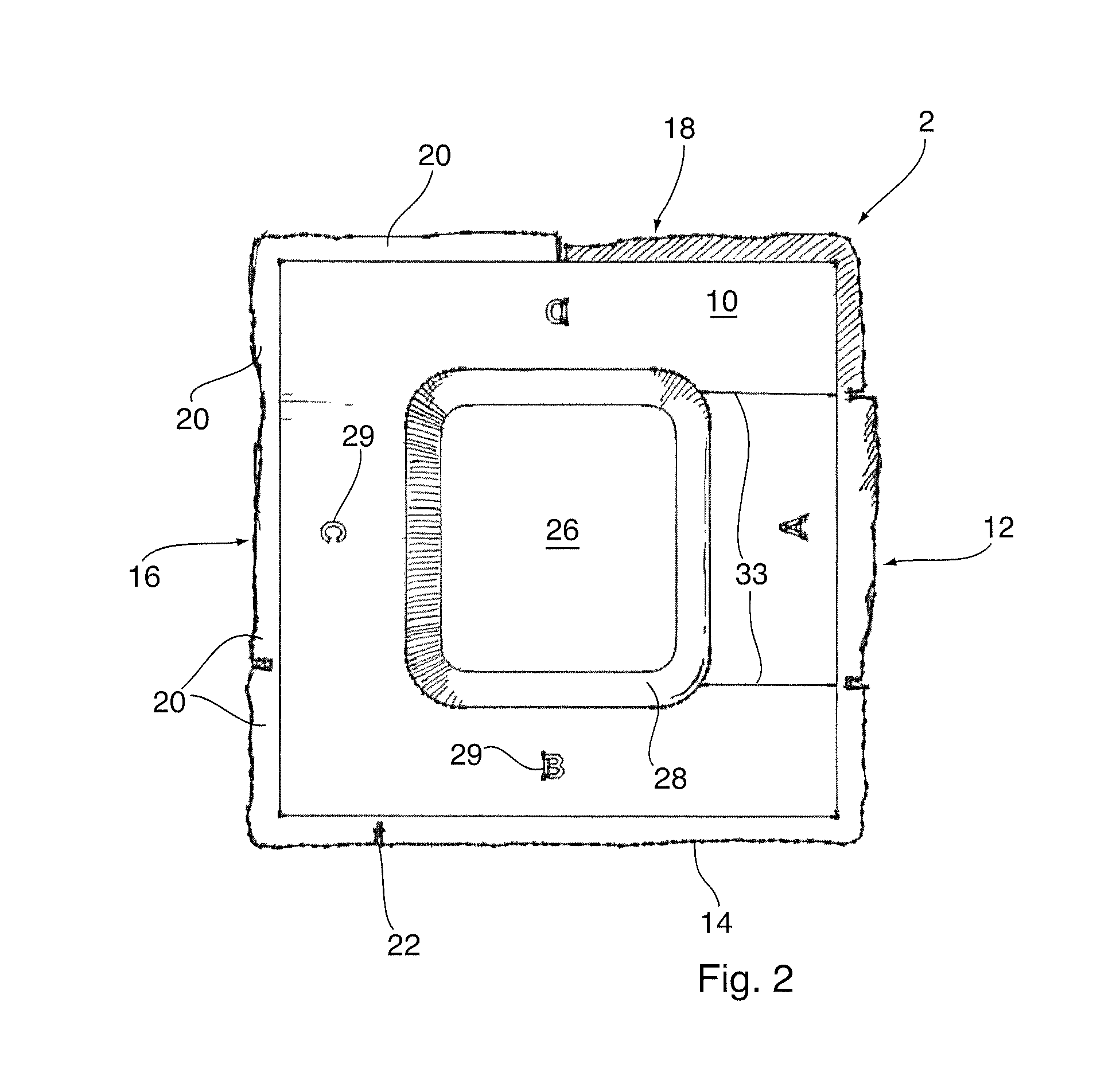Prefabricated pillar slab system
a prefabricated and pillar technology, applied in the field of masonry structures, can solve the problems of time-consuming laying and stacking individual masonry units, prolonging the pillar construction process, and requiring mortar or expensive adhesives
- Summary
- Abstract
- Description
- Claims
- Application Information
AI Technical Summary
Problems solved by technology
Method used
Image
Examples
Embodiment Construction
[0030]The invention eliminates one or more of the disadvantages of prior art pillar construction techniques. By providing a pillar element or “slab” as a unitary complete pillar course, the system of the invention avoids the time-consuming process of fitting together and stacking many different sizes of masonry units, significantly reduces the time required to construct a pillar, and eliminates the need for skilled or semi-skilled labour in the pillar construction process.
[0031]Using simulated joints defining simulated stone faces according to the invention, a pillar can be constructed having the appearance of multiple smaller, randomly-sized, natural stone pillar units laid in a course and overlapping each other. Moreover, according to the present invention a pillar can be constructed using a plurality of identical slabs for each course, while avoiding obvious repeating patterns in the pillar faces which would tend to detract from the ‘natural stone’ look of the exterior pillar sur...
PUM
 Login to View More
Login to View More Abstract
Description
Claims
Application Information
 Login to View More
Login to View More - R&D
- Intellectual Property
- Life Sciences
- Materials
- Tech Scout
- Unparalleled Data Quality
- Higher Quality Content
- 60% Fewer Hallucinations
Browse by: Latest US Patents, China's latest patents, Technical Efficacy Thesaurus, Application Domain, Technology Topic, Popular Technical Reports.
© 2025 PatSnap. All rights reserved.Legal|Privacy policy|Modern Slavery Act Transparency Statement|Sitemap|About US| Contact US: help@patsnap.com



